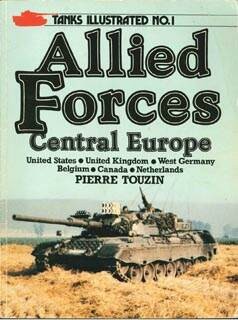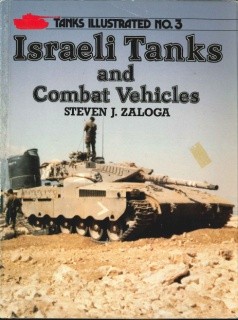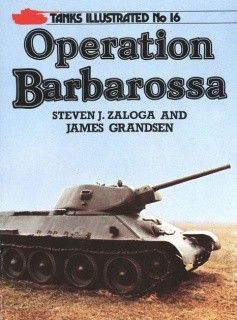Tanks Illustrated 03 - Israeli Tanks and Combat Vehicles.pdf
-
➠ Gigi D'agostino - Dyskografia (1996-2010) -
♠15 MNK.Mragowo 2013 -
19 Festiwal Kabaretu W Koszalinie 2013 -
5 Zielonogórska Noc Kabaretowa -
50 KFPP.OPOLE 2013 -
avi -
Bezimienni - The Forgotten -
Bones - Kości Sezon 7 (Lektor PL) mkv 720p HD -
Czas Honoru Sezon 6 -
Czas Honoru Sezon 6 avi -
Czas Honoru Sezon 6 rmvb -
Dexter Sezon 8 (Lektor PL) -
Dexter Sezon 8 (Lektor PL) avi -
Dexter Sezon 8 (Lektor PL) rmvb -
Internat Sezon 2 (Lektor PL) rmvb -
Kabaretowe wakacje z Duchami III -
Kontra Sezon 4 (Lektor PL) mkv 720p HD -
Lekarze Sezon 3 -
Lekarze Sezon 3 avi -
Lekarze Sezon 3 rmvb -
Najwięksi Zbrodniarze Wojenni -
New Girl Sezon 2 (Lektor PL) avi -
New Girl Sezon 2 (Lektor PL) rmvb -
Oz Sezon 2 (Lektor IVO PL) avi -
OZ Sezon 2 (Wgrane Napisy PL) avi -
OZ Sezon 2 (Wgrane Napisy PL) rmvb -
Oz Sezon 3 (Lektor IVO PL) avi -
OZ Sezon 3 (Wgrane Napisy PL) avi -
OZ Sezon 3 (Wgrane Napisy PL) rmvb -
OZ Sezon 4 (Wgrane Napisy PL) avi -
Przepis na życie Sezon 5 avi -
Przepis na życie Sezon 5 rmvb -
rmvb -
rmvb IVO lektor -
Rodzina Soprano Sezon 5 (Lektor PL) rmvb -
Rząd - Borgen -
Rząd - Borgen Sezon 1 (Lektor PL) avi -
Rząd - Borgen Sezon 1 (Lektor PL) mkv 720p HD -
Rząd - Borgen Sezon 1 (Lektor PL) rmvb -
Sezon 1 (Wgrane Napisy PL) -
Sezon 2 (Lektor PL) -
Sezon 2 (Wgrane Napisy PL) -
Sezon 3 (Lektor PL) avi -
Sezon 3 (Lektor PL) mkv -
Sezon 3 (Wgrane Napisy PL) -
Sezon 4 (Wgrane Napisy PL) -
Sezon 5 -
Sezon 5 lektor -
Sezon 6 [Lektor PL] -
Sopot Festiwal
 With the Allied 'Torch' landings in November 1942 and the fall of Tripoli in January 1943, the position of the Axis forces in North Africa had become perilous. Rommel, commanding Panzer Armec Afrika, had been pressing with increasing urgency for the promised reinforcements of six or seven divisions and two heavy tank battalions with their 40 Tiger tanks and 40 Pz Kpfw IIIs.
After his recall to Berlin in March 1943, during which he requested the evaluation of his remaining forces in Tunisia, Rommel was replaced in command on the 9th of the month by Von Arnim, who had formed the 5th Panzer Armee in December 1942 and who retained overall command of Armee Gruppe Afrika until the surrender of all Axis forces in Tunisia in May 1943.
With the Allied 'Torch' landings in November 1942 and the fall of Tripoli in January 1943, the position of the Axis forces in North Africa had become perilous. Rommel, commanding Panzer Armec Afrika, had been pressing with increasing urgency for the promised reinforcements of six or seven divisions and two heavy tank battalions with their 40 Tiger tanks and 40 Pz Kpfw IIIs.
After his recall to Berlin in March 1943, during which he requested the evaluation of his remaining forces in Tunisia, Rommel was replaced in command on the 9th of the month by Von Arnim, who had formed the 5th Panzer Armee in December 1942 and who retained overall command of Armee Gruppe Afrika until the surrender of all Axis forces in Tunisia in May 1943.
 The combat units of the NATO forces are in training either separately or together all year round. Much of the training of the ground forces takes place in military camps, but in September each year there is a large-scale exercise in West Germany as part of the 'Autumn Forge' series of exercises. During this time the combat vehicles may be seen outside their usual confines, operating in what would be their environment in a time of conflict. The exercise allows units from the participating nations to familiarize themselves with their allies' items of equipment and to ameliorate problems arising from language difficulties.
This volume presents the main combat vehicle types in use with the major armies protecting NATO's central front: namely units from the Belgian, British, Canadian, Dutch, West German and US armies. The vehicles are depicted on exercise, which provides journalists and authors with a unique opportunity to see many interesting vehicles and operations in a short space of time. For about ten days each year since 1974 I have been fortunate to attend the September exercise in West Germany. The photographs presented in this volume have been selected from my endeavours of the last eight years and afford the reader an unusual perspective on many of the modern combat vehicles in service with the Allied forces in Europe.
The combat units of the NATO forces are in training either separately or together all year round. Much of the training of the ground forces takes place in military camps, but in September each year there is a large-scale exercise in West Germany as part of the 'Autumn Forge' series of exercises. During this time the combat vehicles may be seen outside their usual confines, operating in what would be their environment in a time of conflict. The exercise allows units from the participating nations to familiarize themselves with their allies' items of equipment and to ameliorate problems arising from language difficulties.
This volume presents the main combat vehicle types in use with the major armies protecting NATO's central front: namely units from the Belgian, British, Canadian, Dutch, West German and US armies. The vehicles are depicted on exercise, which provides journalists and authors with a unique opportunity to see many interesting vehicles and operations in a short space of time. For about ten days each year since 1974 I have been fortunate to attend the September exercise in West Germany. The photographs presented in this volume have been selected from my endeavours of the last eight years and afford the reader an unusual perspective on many of the modern combat vehicles in service with the Allied forces in Europe.
 The 1973 Yom Kippur War had a devastating effect on the IDF (Israel Defence Forces) Armoured Corps. Israeli tanks, once invincible in battle, fell casualty, not to Egyptian and Syrian armour formations, but to infantry forces armed with anti-tank weapons such as the 'Sagger' missile and the infamous RPG. The losses suffered by IDF tanks and crews because of these weapons were severe and deeply felt in Israel, a nation incapable of accepting heavy battlefield casualties. As a result, the IDF did what it does best - it modified almost every tank and AFV on its inventory with extra armour and improved anti-tank defences, in many cases totally altering the appearance of weapons systems purchased from other countries. In addition, the Israelis developed their own indigenous MBT, the Merkava, which with its unique design traded in battlefield mobility for crew survivability.
When the TZAHAL (Hebrew acronym for IDF) invaded the Lebanon on 6 June 1982 the newly modified armour forces received their first true combat test. The specially developed applique active armoured plating applied to the M60 (Mag'ach) and Centurion (Sho't) MBTs proved highly successful against all types of anti-tank weapons used by PLO and Syrian forces. The Ml 13 APC, considered a death trap in the 1973 War because so many were destroyed, along with their entire crews, had now received armour sheet protection, and as a result it was able to reach Beirut and beyond with virtual impunity. The Merkava proved to be almighty on the battlefield. It was involved in all aspects of the Lebanese fighting and destroyed numerous Syrian tanks, including more than ten 'invincible' T-72s. Most importantly, although a few Merkavas were lost, not one of their crewmen lost his life in combat. As the war in the Lebanon dragged into a costly Israeli occupation, determined anti-Israeli guerrilla suicide attacks caused the IDF to strengthen even further the armour and anti-personnel capabilities of its combat vehicles. A heavily armoured APC was even developed from the Centurion chassis armed with numerous machine guns and grenade launchers.
Today, the IDF's Armoured Corps (Heyl Shiriori) has developed into the world's most formidable armoured combat force. Yet its roots are humble, and the respect it commands has been brought about only by the bitter clashes and heavy losses endured by the State of Israel in six major wars throughout its 38 years of independence.
The author wishes to offer his thanks to fellow IDF veteran Dan Rosenberg and to Messrs. Moshe Kastoriano, Leslie Hulkower and Yoav Efra'ati for the invaluable assistance they provided in the preparation of this book; he would also like to offer a very special word of thanks to Mr. Andreas Constantinou, whose patience, technical assistance and hard work made the book possible.
The 1973 Yom Kippur War had a devastating effect on the IDF (Israel Defence Forces) Armoured Corps. Israeli tanks, once invincible in battle, fell casualty, not to Egyptian and Syrian armour formations, but to infantry forces armed with anti-tank weapons such as the 'Sagger' missile and the infamous RPG. The losses suffered by IDF tanks and crews because of these weapons were severe and deeply felt in Israel, a nation incapable of accepting heavy battlefield casualties. As a result, the IDF did what it does best - it modified almost every tank and AFV on its inventory with extra armour and improved anti-tank defences, in many cases totally altering the appearance of weapons systems purchased from other countries. In addition, the Israelis developed their own indigenous MBT, the Merkava, which with its unique design traded in battlefield mobility for crew survivability.
When the TZAHAL (Hebrew acronym for IDF) invaded the Lebanon on 6 June 1982 the newly modified armour forces received their first true combat test. The specially developed applique active armoured plating applied to the M60 (Mag'ach) and Centurion (Sho't) MBTs proved highly successful against all types of anti-tank weapons used by PLO and Syrian forces. The Ml 13 APC, considered a death trap in the 1973 War because so many were destroyed, along with their entire crews, had now received armour sheet protection, and as a result it was able to reach Beirut and beyond with virtual impunity. The Merkava proved to be almighty on the battlefield. It was involved in all aspects of the Lebanese fighting and destroyed numerous Syrian tanks, including more than ten 'invincible' T-72s. Most importantly, although a few Merkavas were lost, not one of their crewmen lost his life in combat. As the war in the Lebanon dragged into a costly Israeli occupation, determined anti-Israeli guerrilla suicide attacks caused the IDF to strengthen even further the armour and anti-personnel capabilities of its combat vehicles. A heavily armoured APC was even developed from the Centurion chassis armed with numerous machine guns and grenade launchers.
Today, the IDF's Armoured Corps (Heyl Shiriori) has developed into the world's most formidable armoured combat force. Yet its roots are humble, and the respect it commands has been brought about only by the bitter clashes and heavy losses endured by the State of Israel in six major wars throughout its 38 years of independence.
The author wishes to offer his thanks to fellow IDF veteran Dan Rosenberg and to Messrs. Moshe Kastoriano, Leslie Hulkower and Yoav Efra'ati for the invaluable assistance they provided in the preparation of this book; he would also like to offer a very special word of thanks to Mr. Andreas Constantinou, whose patience, technical assistance and hard work made the book possible.
 During the Second World War, British tanks were generally inferior to their German opponents with respect to their firepower and armour protection, while their high mobility in the early years was severely compromised by chronic unreliability. Since the war British designers have consistently pursued a policy that would prevent British troops ever taking the field again with tanks of inferior armour and armament. Unlike the European school of thought which advocates high mobility and firepower to ensure survival on the battlefield, the British consider that firepower is the primary attribute of a tank in defeating enemy armour at long ranges, followed closely by heavy armour protection to enable it to absorb punishment and manoeuvre at close quarters with relative immunity in a theatre of high-intensity warfare. Immediately after the war Britain abandoned the misguided doctrine of dividing tanks into 'Cruiser' and 'Infantry' types and adopted the idea of a 'Universal' or 'general purpose' tank, later to be known as the 'Main Battle Tank'. The first of these was Centurion, an excellent design capable of being repeatedly upgraded. Originally armed with the 17pdr, it was subsequently fitted with the 20pdr and finally the 105mm gun; the frontal armour was increased and fuel capacity more than doubled. Its successor, Chieftain, was designed from the outset to mount the most powerful and effective gun feasible, with a range of ammunition capable of defeating different armour arrangements at considerable range. The latest British Main Battle Tank is Challenger. It incorporates the latest developments in tank technology, including advanced compound armour, a computerised fire control system and thermal-imaging equipment for night fighting. Challenger is the product of more than 60 years of British tank development and is one of the foremost AFV designs in the world. The photographs on the following pages form a representative cross-section of the principal battle tanks employed by the British Army in the past forty years. In preparing them for publication I wish to thank the public relations departments of the Ministry of Defence; HQ Royal Armoured Corps Centre; National Army Museum; James Haddon; Vickers Defence Systems; and Les Wiggs of Soldier Magazine.
During the Second World War, British tanks were generally inferior to their German opponents with respect to their firepower and armour protection, while their high mobility in the early years was severely compromised by chronic unreliability. Since the war British designers have consistently pursued a policy that would prevent British troops ever taking the field again with tanks of inferior armour and armament. Unlike the European school of thought which advocates high mobility and firepower to ensure survival on the battlefield, the British consider that firepower is the primary attribute of a tank in defeating enemy armour at long ranges, followed closely by heavy armour protection to enable it to absorb punishment and manoeuvre at close quarters with relative immunity in a theatre of high-intensity warfare. Immediately after the war Britain abandoned the misguided doctrine of dividing tanks into 'Cruiser' and 'Infantry' types and adopted the idea of a 'Universal' or 'general purpose' tank, later to be known as the 'Main Battle Tank'. The first of these was Centurion, an excellent design capable of being repeatedly upgraded. Originally armed with the 17pdr, it was subsequently fitted with the 20pdr and finally the 105mm gun; the frontal armour was increased and fuel capacity more than doubled. Its successor, Chieftain, was designed from the outset to mount the most powerful and effective gun feasible, with a range of ammunition capable of defeating different armour arrangements at considerable range. The latest British Main Battle Tank is Challenger. It incorporates the latest developments in tank technology, including advanced compound armour, a computerised fire control system and thermal-imaging equipment for night fighting. Challenger is the product of more than 60 years of British tank development and is one of the foremost AFV designs in the world. The photographs on the following pages form a representative cross-section of the principal battle tanks employed by the British Army in the past forty years. In preparing them for publication I wish to thank the public relations departments of the Ministry of Defence; HQ Royal Armoured Corps Centre; National Army Museum; James Haddon; Vickers Defence Systems; and Les Wiggs of Soldier Magazine.



 Pobierz
Pobierz




